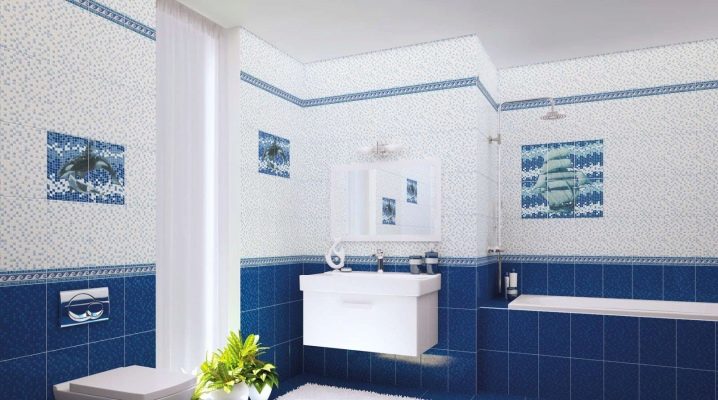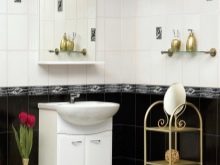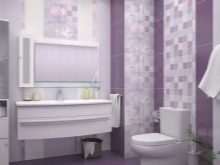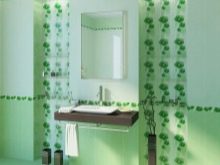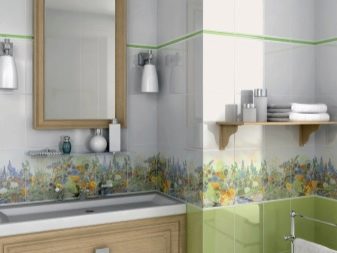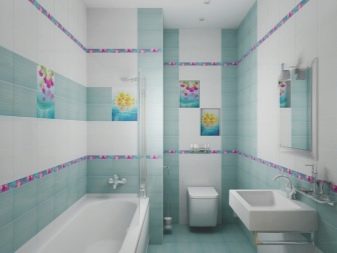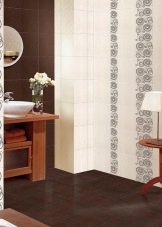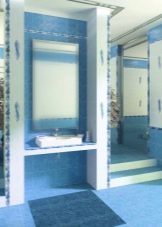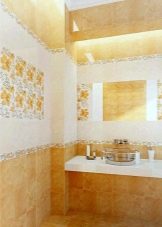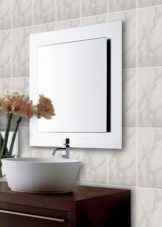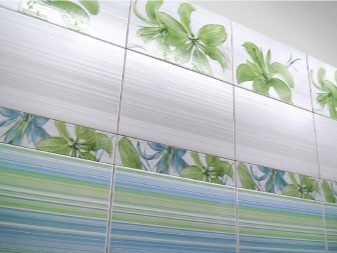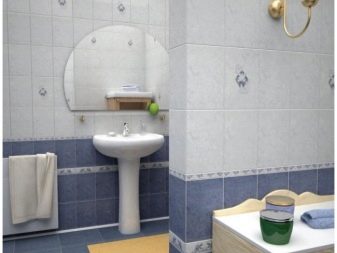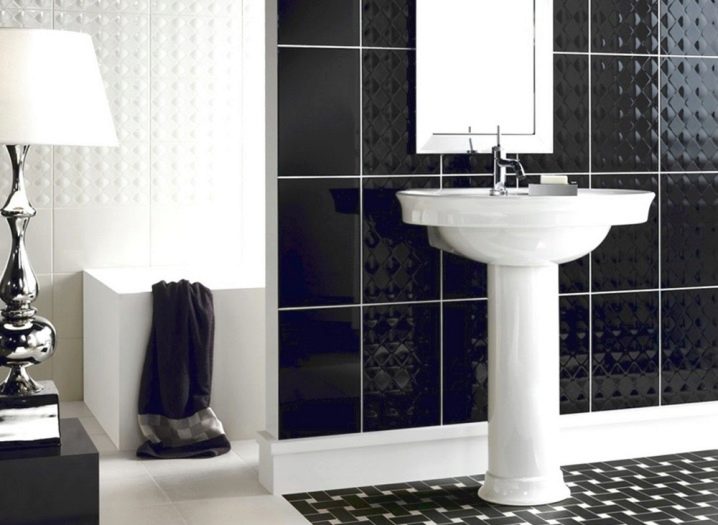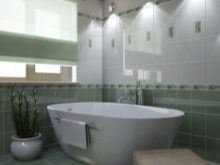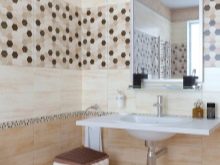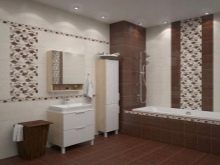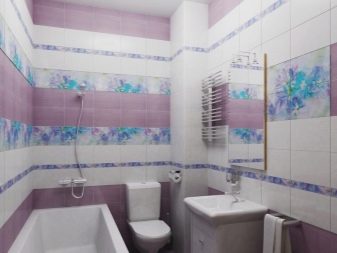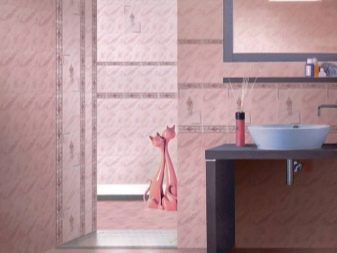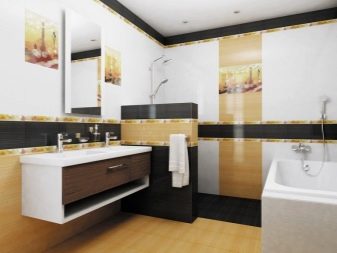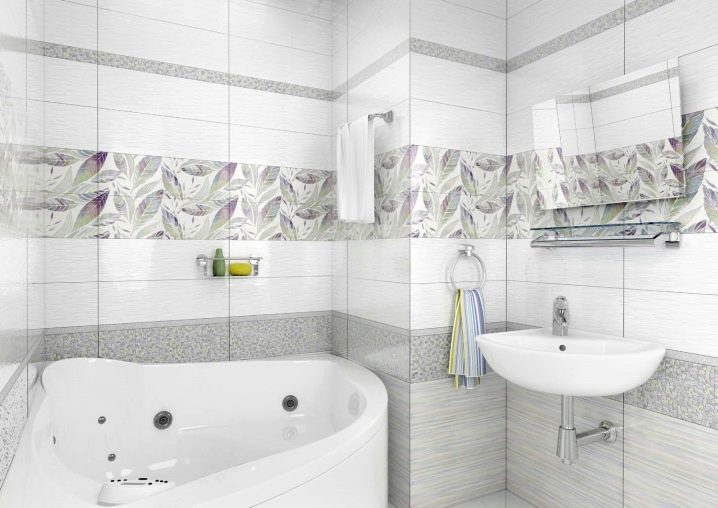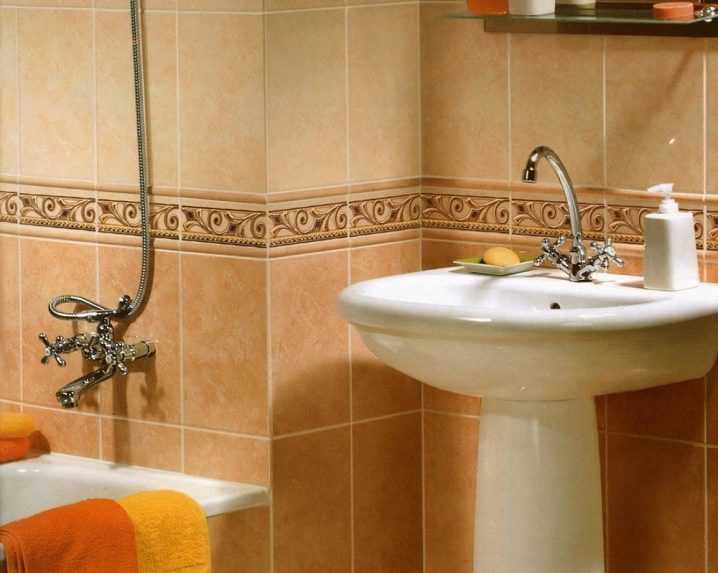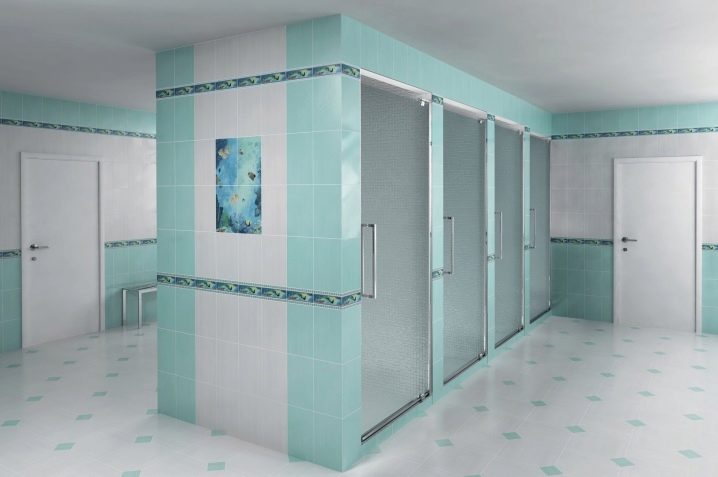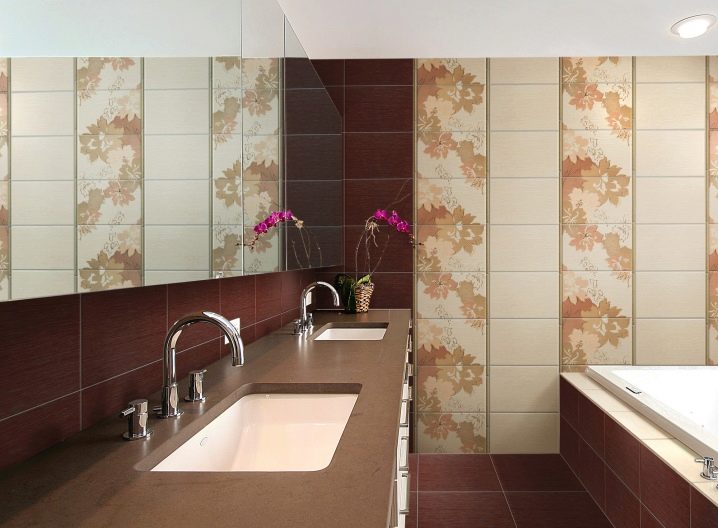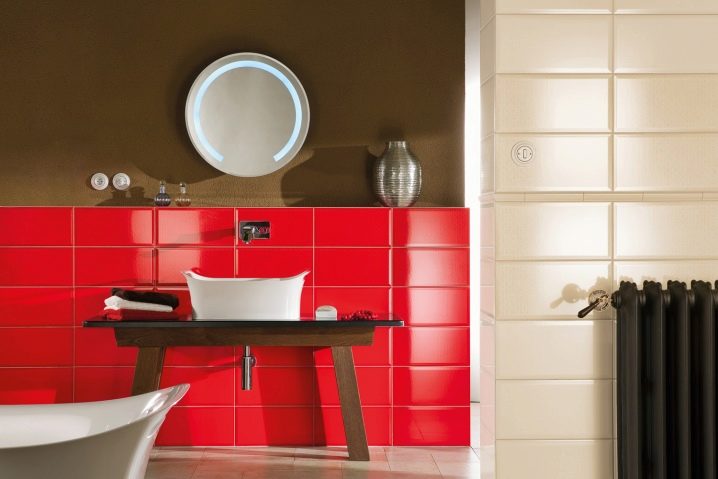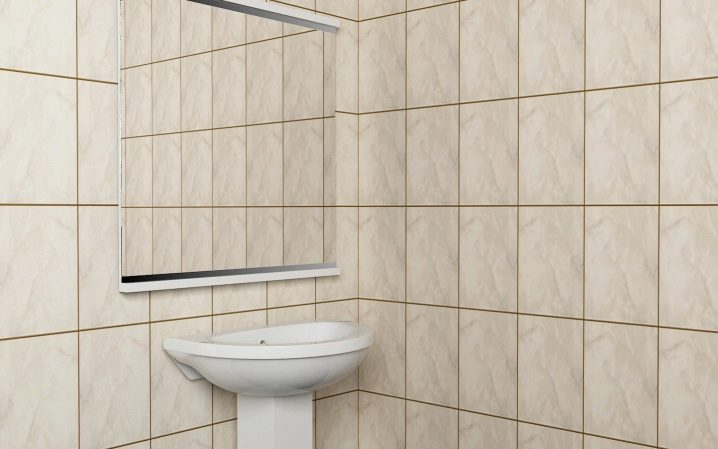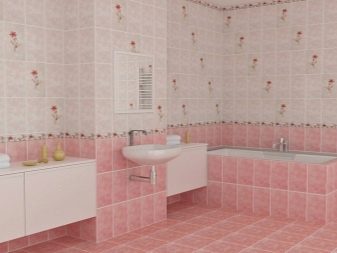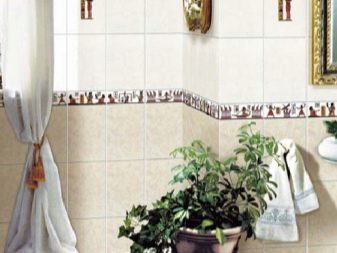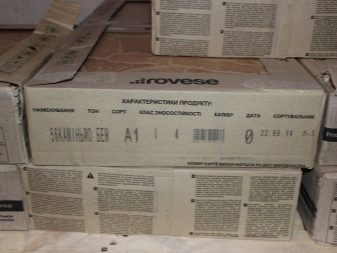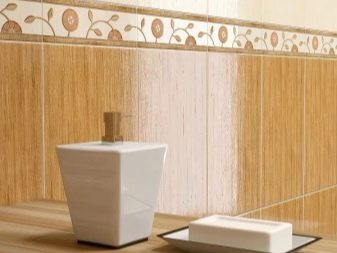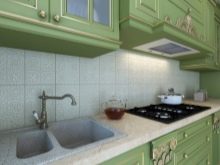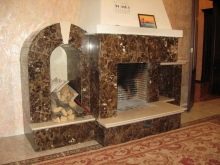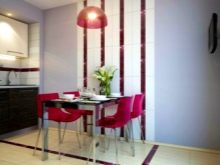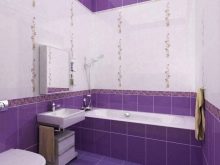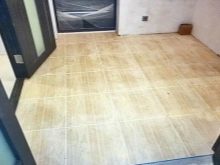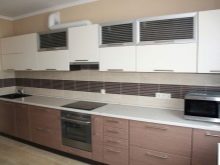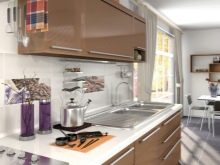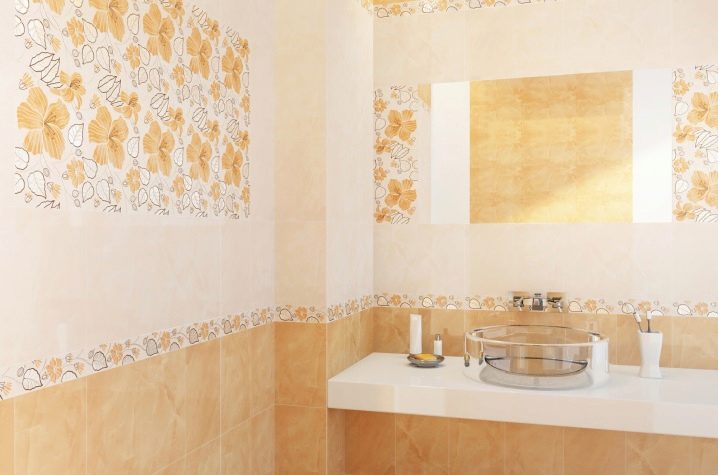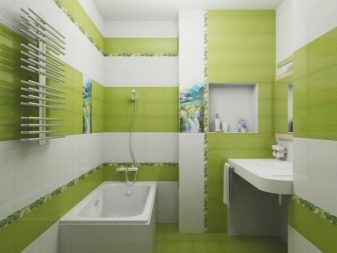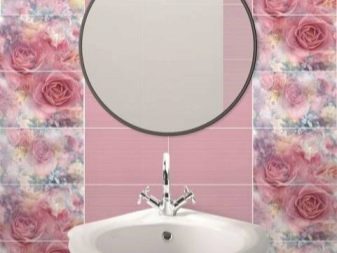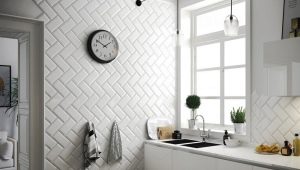Tile size 20 x 30 cm: characteristics and features
Choosing a facing material for finishing the home, many prefer tile. Being a unique raw material with a maximum of decorative possibilities, it has a number of advantages in comparison with other finishing materials. As for the dimensions of products, varieties of 20 x 30 cm are in great demand.
We will understand their features, practical characteristics and modern application in decorating the space.
Features and benefits
Tile size 20 x 30 cm is the most popular for several reasons:
- cutting with a classic tile cutter and even a glass cutter;
- optimum dimensions of products save time for implementation of laying;
- due to the low weight of the products, the procedure of pasting the surface is simplified;
- such material rarely breaks and breaks, which allows to minimize the amount of residue after laying;
- this type of raw material is in any collection of modern brands;
- such material implies options for combining;
- the simplicity of the styling process eliminates the need for outside involvement.
You can lay wall tiles vertically and horizontally. This allows you to visually increase the width or height of the walls in accordance with the design idea.
Simultaneous combination of the direction of fragments is also allowed. For example, a niche can be identified by laying tiles horizontally.
Features of this facing consist of its advantages and disadvantages.
Consider the main benefits:
- This material is safe. There are no harmful substances in its composition, therefore in the process of exploitation it will not have a negative impact on the health of the household. The biological cleanliness of a tile depends solely on the degree of contamination. It has been scientifically proven that mold fungi and pathogenic bacteria do not survive on such a surface. Care for it is quite simple: the lining is simply wiped with a damp sponge.
- This finish is inherent in a variety of textures. In addition to the fact that it is glossy and matte, manufacturers produce varieties with relief.
- The collections presented by trademarks for sale are distinguished by a wide range of shades, which allows you to choose a finish to match the furniture or decor.
- This tile is a versatile material that is appropriate in the finishing styles of different directions. With a good choice of it you can decorate the surface of a classic, modern, ethnic and vintage design.
- This option allows you to use tiles in different rooms. She can decorate not only the surface of the bathroom, toilet and hallway. With a creative approach to the preparation of interior design, it will be appropriate in the hallway, kitchen, living room, as well as on the loggia or balcony.
- Size allows you to combine material of different textures and shades, which is especially convenient when composing compositions with the addition of borders.
Specifications
Consider the main characteristics of products of format 20 x 30 cm:
- Depending on the type of material, the tile has a different thickness and level of maximum permissible load. Thickness of tiled facing materials for walls varies from 5 to 9 mm. It is important to remember that wall tiles can not be used to finish the floor, because its permissible weight load is much lower.
- This finish is fire resistant. Its structure does not respond to changes in temperature, however, the material has a clear classification for interior work.
- With proper installation with preliminary surface preparation, this material is able to decorate walls for 15–20 years or more.
- A tile with such a size has small seams; when processing them with a special composition, you can not be afraid that they will cause a decrease in service life.
- The surface of the material can be glazed and unglazed. The presence of a protective layer increases the thickness and weight of the tiles, corresponding to GOST. Facing 1 square meter of ceramic tile wall weighs approximately 12-13 kg (weight of 1 sq. M of tiles for finishing the floor is approximately 16 kg).
- Wall tiles of 20 x 30 cm are not erased by abrasives. At the same time, the intensity of shades does not change during the whole time while it is on the surface.
- Finishing can imitate other materials, including different types of wood, stone, marble chips, natural leather and textiles.
disadvantages
Despite the many advantages, tile size of 20 x 30 cm is not without flaws. This material is cold.He is not able to warm the walls, so to finish with such material most of the dwelling is not recommended. This can make the room cold not only visually.
An important point is the thorough preparation of the base. Many recognize the disadvantage of the need for perfect alignment of the surface for laying. Any bumps will vary in level.
In addition, to dismantle such sheathing material is not easy. Therefore, if you suddenly want to decorate the surface with new trendy colors, you may encounter difficulties.
Substandard products sometimes do not withstand exposure to extreme temperatures. and other factors that affect the quality of coverage, so buying material is exclusively from reliable manufacturers in stores with a good reputation.
Also, this size is not always possible to choose the floor tile finish. It is impossible to use a tile for a floor, and the discrepancy between the joints of different size tiles can visually spoil the appearance of the lining. Therefore, the calculation and selection of both wall and floor tiles is very complex.
Payment
Buying lining "by eye" can lead to a shortage or a large excess of products. In order not to overpay for the material, which, after finishing the work, will gather dust in the closet, the required number of fragments is calculated before purchase.
A feature of the method is the fact that the tiles are not counted individually, but measured in square meters.
To do this, calculate the area of a single fragment of 20 x 30 cm by the algorithm:
- centimeters are converted to meters: 20 cm = 0.2 m, 30 cm = 0.3 m;
- the length is multiplied by the width: 0.2 x 0.3 = 0.06 m;
- divide 1 square. m on S of one tile: 1 / 0.06 = 16.66 m ≈ 17 pieces.
Thus, on 1 square. m surface will require 17 whole fragments. Knowing the total area of finishing works, it will be necessary to substitute the necessary number instead of one.
For example, if the lining area leaves 6 square meters. m, the calculation will be as follows: 6 / 0.06 = 100 pieces.
This calculation assumes the absence of marriage. However, it is not uncommon for a tile to break during transportation or during work (for example, if cutting is improper). Therefore, regardless of the desired volume, another 10% is always added to it. This will save you from the possible shortage of facing materials and allow you to replace a broken part in case of a correction.
How many in a box?
Packages of each specific brand provide their own standards. Usually, companies try not to overload the boxes with a weight load, so the number of ceramic dies 200 x 300 mm per package is divided into 2 rows.
In total, the box is usually put no more than 24 pieces. fragments of this size. On average, this amount is enough for laying 1.5 square meters. m. Packaging weight is about 17 kg. If the tile is glazed, the weight of such a package will be greater.
Use in the interior
Tile size 20 x 30 cm is convenient for finishing different surfaces.
- In the kitchen with such material, you can lay out the "apron", including contrasting fragments of kitchen or geometric themes in the lining.
- In the living room or kitchen wall tiles can decorate the fireplace protrusion, choosing its color in the same color scheme as the tone of the interior composition.
- A tile-accent on the wall that marks the dining area will look original.
- In the bathroom to the wall tile size of 20 x 30 cm, you can add a serial floor tile in one tone. This is the only place in the house where the abundance of such material looks appropriate. As a rule, the serial material has accent inserts that do not overload the composition of the picture.
- For the hallway, you can choose a practical option with an imitation of wood texture.Due to the presence of roughness and a matte surface, such a finish will look very stylish.
- If the layout is open, it makes sense to use different finishing materials in color and texture for two different functional areas. For example, you can select the cooking zone and dining room. These places need daily cleaning.
How to correctly and quickly put the tiles in the bathroom, see the video below.
Color solutions
To date, the color palette of shades of tiles for walls measuring 20 x 30 cm is diverse. Her choice is based on the purpose of the room and the taste preferences of the owners of the house.
For the kitchen offers a textured variety, beige, coffee, pink and peach tones. The colors of the lining for the bathroom follow mainly the marine theme, although today, in addition to the blue and blue-green tones, you can find milky-chocolate, creamy-pink, emerald-green and monochrome variants in the decoration of the panels and walls.
How to choose?
When choosing a tile with a size of 20 x 30 cm for wall finishing, there are a few factors to consider:
- The color of the lining should not "interrupt" the interior composition. It is important that he gently set off bright contrasts.
- Do not start from the color of the wallpaper, because they often change. The shade of the facing should be combined with any background of the walls.
- Do not overload the coating with a large pattern.if the room is small. This can visually make it even closer.
- Choosing material with color inserts, think carefully about the design. Unsuccessful arrangement of the picture can visually skew the wall on which the lining is made.
- Buy high quality goods (this is indicated by the red label on the package). Such material is practical and durable.
- Do not select the color of the facing material "under the tree"if there are many such shades in the room. Otherwise, you can get the effect of a sauna house.
- Do not use bright tilesif the furniture is made in rich colors.
